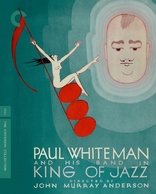King of Jazz Blu-ray Movie
HomeKing of Jazz Blu-ray Movie 
Criterion | 1930 | 100 min | Not rated | Mar 27, 2018Movie rating
7 | / 10 |
Blu-ray rating
| Users | 0.0 | |
| Reviewer | 4.5 | |
| Overall | 4.5 |
Overview
King of Jazz (1930)
Starring the bandleader Paul Whiteman, then widely celebrated as the King of Jazz, the film drew from Broadway variety shows of the time to present a spectacular array of sketches, performances by such acts as the Rhythm Boys, and orchestral numbers overseen by bandleader Paul Whiteman himself.
Starring: Paul Whiteman, John Boles, Laura La Plante, Jeanette Loff, Glenn TryonDirector: John Murray Anderson
| Musical | Uncertain |
| Music | Uncertain |
| Comedy | Uncertain |
| Animation | Uncertain |
Specifications
Video
Video codec: MPEG-4 AVC
Video resolution: 1080p
Aspect ratio: 1.35:1
Original aspect ratio: 1.37:1
Audio
English: LPCM Mono (48kHz, 24-bit)
Subtitles
English SDH
Discs
Blu-ray Disc
Single disc (1 BD)
Playback
Region A (locked)
Review
Rating summary
| Movie | 4.0 | |
| Video | 4.5 | |
| Audio | 5.0 | |
| Extras | 5.0 | |
| Overall | 4.5 |
King of Jazz Blu-ray Movie Review
Reviewed by Dr. Svet Atanasov March 25, 2018John Murray Anderson's "King of Jazz" (1930) arrives on Blu-ray courtesy of Criterion. The supplemental features on the disc include an exclusive new audio commentary with jazz and film critic Gary Giddins, music critic Gene Seymour, and musician and bandleader Vince Giordano; new video interview with pianist Michael Feinstein; deleted sketches; short animated films; and a lot more. The release also arrives with a 22-page illustrated booklet featuring an essay by critic Farran Smith Nehme, as well as technical credits. In English, with optional English SDH subtitles for the main feature. Region-A "locked".
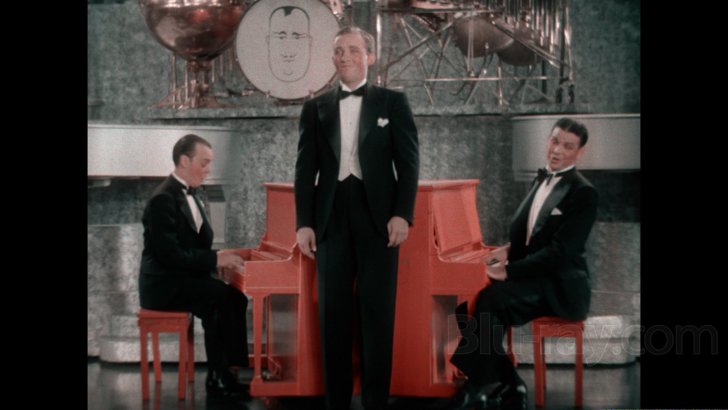
The Rhythm Boys
The first thing that John Murray Anderson’s King of Jazz makes very clear is that more than eight decades after its theatrical release the term ‘jazz’ is used to describe a very different type of music. But is it because jazz evolved dramatically over the years and changed people’s perception of it, or is it because the type of music that the film promoted at the time was only a tiny fraction of what jazz was?
To get the right answer one has to consider when King of Jazz was conceived, which was during the early 1930s, a transitional period in which entire ranges of socio-cultural norms and values were slowly evolving and impacting the nature of the music that the likes of Paul Whiteman and his boys performed. So at the time there was already an ongoing trend to explore and move forward while creating original new music and King of Jazz basically offered a unique glimpse at the early stage of the evolution. However, the same sense of freedom that is easily felt throughout King of Jazz also inspired the likes of Charlie Parker and Dizzy Gillespie to create and perform a very different type of music, which is essentially when jazz began adopting multiple identities. In other words, the point of origin for jazz music was the same -- it was where musicians deliberately began altering and replacing the ‘classic’ harmonic structures and rhythmic patterns -- but because there wasn’t a unifying philosophy that defined the evolution it was only a matter of time before its interpretation became remarkably loose. (Ironically, all these years later precisely the same evolutionary trend is responsible for the emergence of numerous new subgenres such as acid jazz, smooth jazz and new age jazz, and they have practically nothing in common with the music that is heard in this film).
King of Jazz is structured as a vaudeville that promotes the transitional changes that would eventually give birth to what plenty of folks now consider to be classic jazz. There are a series of carefully staged numbers in which Whiteman and his boys do unique pieces that highlight their strengths while performing as a unit and soloists then go to work to prove that their improvisational skills are unmatched. The other big attraction is The Russell Market Girls, which is a group of sixteen beautiful dancers that do carefully choreographed pieces that remind of Busby Berkeley’s work. Finally, there are a few small but rather raunchy for the era comedy sketches that were likely tucked between the big numbers to reenergize the minds of folks that may have found the main entertainment less than impressive.
There is a lot of quality material of historical value here. For example, one of the highlights is a great early performance of a very interesting arrangement of Rhapsody in Blue -- immortalized with a rather odd green font because of the use of two-strip Technicolor -- that apparently inspired plenty of folks, including a veteran film critic, to incorrectly insist that the man playing the piano was no other than George Gershwin. A very young Bing Crosby and his two partners also do a great piece towards the middle of the film. Iconic performers like Joe Venuti (violin), Mike Pingatore (banjo), Roy Maier (piccolo), and especially Wilbur Hall (trombone) do some absolutely astonishing solo pieces as well. It is even worth mentioning that during the shoot virtually all of the big group numbers were done without pre-recorded music, which makes the flawless synchronization that much more impressive.
The end result, however, isn’t the masterpiece that over the years some critics have argued it is. For example, Old Black Joe’s number is so rough that it feels a bit like a random casting test. Then there is the equally awkward use of children voices in adult situations that look completely out of sync with the rest of the numbers. Some of the editing choices are not convincing either.
King of Jazz Blu-ray Movie, Video Quality 
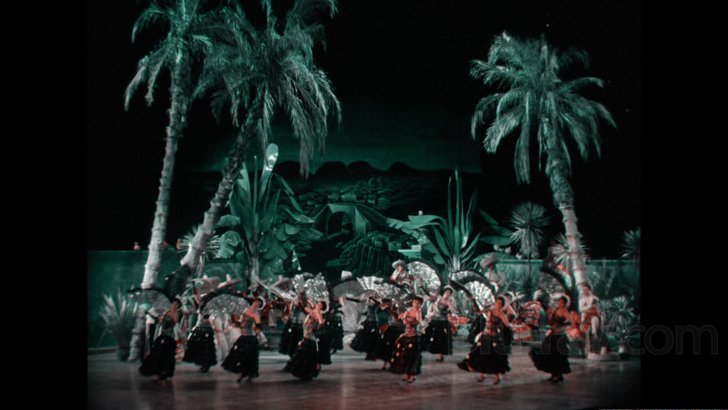
Presented in an aspect ratio of 1.35:1, encoded with MPEG-4 AVC and granted a 1080p transfer, John Murray Anderson's King of Jazz arrives on Blu-ray courtesy of Criterion.
The following text appears inside the booklet provided with this Blu-ray release:
Undertaken by Universal Pictures, this new digital transfer was created in 4K resolution on Oxberry, Scanity, and ARRI film scanners from the 35mm nitrate original camera negative and three 35mm prints. The original monaural soundtrack was remastered from a 35mm optical soundtrack negative. Picture and sound restoration was performed by NBCUniversal StudioPost in Los Angeles. Film evaluation, scanning, and recombine were performed at YCM Laboratories in Burbank, California; Cineric in New York; and Prasad Corporation in Chennai, India."
The film was shot in early two-strip Technicolor and some of its native limitations are quite prominent. The absence of primary blue and bluish nuances for instance clearly contributes to some of the mild flatness that emerges during select panoramic shots, while elsewhere clarity feels less than optimal. Density levels also tend to fluctuate, though in this case the nature of the surviving elements that were used to create the new master are primarily responsible for the unevenness. Predictably, grain exposure is also affected. Image stability is good, but there are some missing frames and a few shaky transitions. A few tiny specks and even smaller black dots remain as well. Overall, this is a good organic presentation of the film with some unavoidable minor inherited limitations. (Note: This is a Region-A "locked" Blu-ray release. Therefore, you must have a native Region-A or Region-Free player in order to access its content).
King of Jazz Blu-ray Movie, Audio Quality 
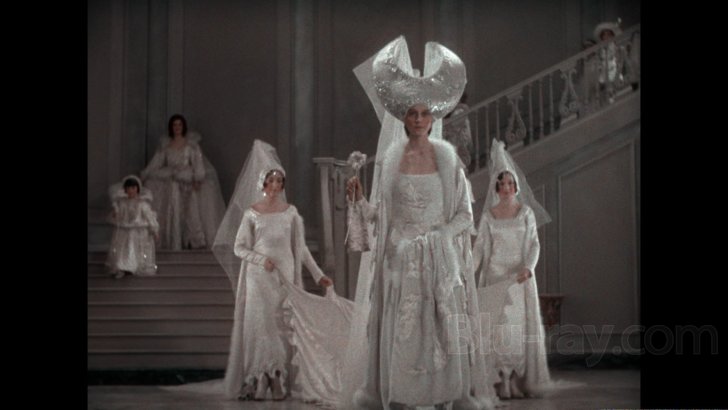
There is only one standard audio track on this Blu-ray release: English LPCM 1.0. Optional English SDH subtitles are provided for the main feature.
The audio is stable and nicely rounded, never exhibiting any signs of troubling deterioration. There are no stability issues to report either. Overall dynamic intensity is also surprisingly good, though you should not expect a strong range of nuanced dynamics. There are no pops, audio dropouts, or digital distortions to report.
King of Jazz Blu-ray Movie, Special Features and Extras 
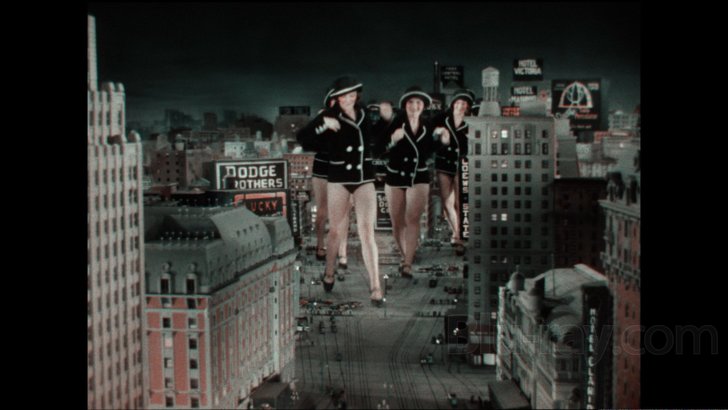
- Deleted Scenes - presented here are three comedy sketches that were not included in the 1930 original version of King of Jazz, but were included in the 1933 re-release version, as well as a couple of different opening sequences. In English, not subtitled.
1. "Pretty Lucky So Far" (2 min, 1080p)
2. "Look What It Makes Me" (1 min, 1080p)
3. "Horse's Neck" (1 min, 1080p)
4. Re-release opening titles (2 min, 1080p).
- Gary Giddins - in this brand new video interview, jazz and film critic Gary Giddins discusses the visual style and narrative construction of King of Jazz as well as the influence that Paul Whiteman and his band had on the evolution of jazz music in America. The interview was recorded exclusively for Criterion in 2017. In English, not subtitled. (17 min, 1080p).
- Michael Feinstein - in this new video interview, musician and pianist Michael Feinstein talks about his love for King of Jazz and discusses the work and legacy of Paul Whiteman as well as the many musicians and composers that worked with him and contributed to John Murray Anderson's film. The interview was recorded exclusively for Criterion in 2017. In English, not subtitled. (20 min, 1080p).
- James Layton and David Pierce - presented here are four video essays from James Layton and David Pierce, the authors of King of Jazz: Paul Whiteman's Technicolor Revue, which contain various vintage materials related to John Murray Anderson and the production history of his film. Also included is the original music score for the film's cartoon prologue. In English, not subtitled.
1. Universal Pictures, A Family Empire (11 min, 1080p).
2. Shooting King of Jazz (11 min, 1080p).
3. "A Fable in Jazz" (6 min, 1080p).
4. Bringing Broadway to the Screen (18 min, 1080p).
5. Music Score - in text format, presented asreprints.
- All Americans (1929) - this short, directed by Joseph Santley and shot at Paramount's Astoria Studios in Queens, New York, presents John Murray Anderson's "The Melting Pot of Music" number as staged as a live prologue for Paramount-Publix theaters. In English, not subtitled. (19 min, 1080p).
- I Know Everybody and Everybody's Racket (1933) - this short was produced by Universal Pictures and stars columnist Walter Winchell and Paul Whiteman and his band. In English, not subtitled. (22 min, 1080p).
- Oswald the Lucky Rabbit - the character of Oswald the Lucky Rabitt was created by Ub Iwerks and Walt Disney in 1927 for a series of cartoons originally distributed by Universal Pictures. The character also appeared in the sketch "A Fable in Jazz" in King of Jazz, animated by Walter Lantz and Bill Nolan. After King of Jazz's release, some Oswald cartoons featured music and animation from the film. Presented here are two such cartoons.
1. "My Pal Paul" (1930), featuring an animated Paul Whiteman. (7 min, 1080p).
2. "Africa' (1930), featuring animation from King of Jazz. (6 min, 1080p).
- Commentary - this fantastic audio commentary features jazz and film critic Gary Giddins, music critic Gene Seymour, and musician and bandleader Vince Giordano. The three gentleman discuss in great detail the socio-cultural environment in which King of Jazz was directed, the pros and cons of various numbers from the film, Paul Whiteman's image and working methods as well as his impact on the evolution of jazz music, the careers of many of the legendary musicians that were part of his band, etc.
- Booklet - 22-page illustrated booklet featuring critic Farran Smith Nehme's essay Now You Has "King of Jazz" and technical credits.
King of Jazz Blu-ray Movie, Overall Score and Recommendation 
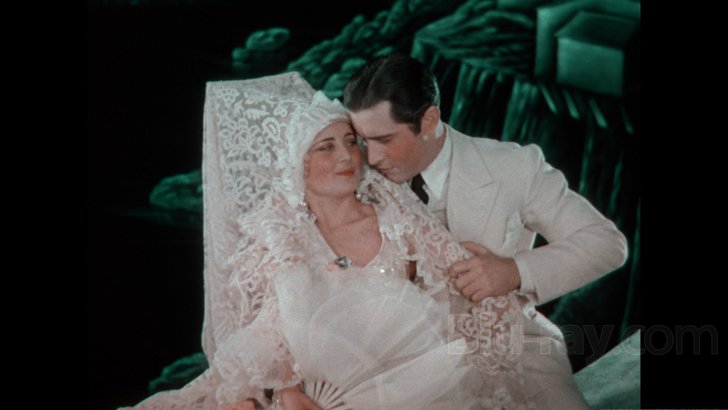
We typically use this section of our reviews to quickly restate our impressions of a film that will soon be available on Blu-ray and, while taking into account its technical presentation, suggest whether you should consider seeing and adding it to your collections. I am going to do something slightly different this time. I wish to encourage folks that are interested in the history of jazz in America to move this upcoming release to the very top of their purchase lists because it has an unmissable audio commentary on the subject. I honestly do not think that Criterion could have chosen a better trio of experts to discuss the production history of John Murray Anderson's King of Jazz and the legacy of Paul Whiteman and his brilliant musicians. The upcoming release is sourced from a very nice new 4K restoration that was completed by Universal Pictures. HIGHLY RECOMMENDED.
Similar titles
Similar titles you might also like

The Girl Can't Help It
1956

Animal Crackers
1930

Goin' to Town
1935

Clambake
1967

How to Succeed in Business Without Really Trying
1967

Victor/Victoria: The Broadway Musical
1995

The Mad Adventures of Rabbi Jacob
Les aventures de Rabbi Jacob
1973

A Night at the Opera
Warner Archive Collection
1935

Copacabana
1947

Thoroughly Modern Millie
1967

Du Barry Was a Lady
Warner Archive Collection
1943

True Stories
1986

Speedy
1928

Duck Soup
1933

Ishtar
Director's Cut
1987

Klondike Annie
1936

The Captain's Paradise
1953

Party Girl
Standard Edition
1995

Bananas
1971

Monkey Business
1931
